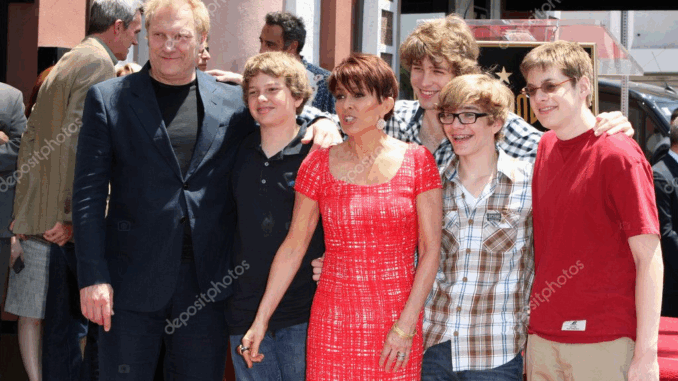
Not Everything Was Smooth
While Everybody Loves Raymond is remembered for its humor, relatable family dynamics, and iconic sitcom moments, the reality behind the cameras was more complex. Long hours, strong personalities, and creative disagreements sometimes led to tension among the cast and crew.
Let’s explore the behind-the-scenes drama that fans never saw, including conflicts, funny incidents, and the dynamics that shaped one of television’s most beloved sitcoms.
1. Reuniting a Star-Studded Cast
-
Bringing together Ray Romano, Patricia Heaton, Brad Garrett, Doris Roberts, and Peter Boyle required careful management
-
Strong personalities occasionally clashed during long shooting days
-
Maintaining professional relationships was crucial to the show’s success
2. Ray Romano’s Perfectionism
-
Ray Romano, as both lead actor and co-creator, sometimes insisted on multiple takes
-
His dedication occasionally frustrated co-stars but ensured high-quality performances
-
Balancing leadership and camaraderie was a recurring challenge
3. Patricia Heaton: Humor Meets Professionalism
-
Known for her wit and dedication
-
Occasionally clashed with writers or producers over script content or comedic timing
-
Advocated for character consistency and emotional authenticity
4. Brad Garrett’s Tall Presence
-
Brad Garrett’s towering stature and comedic style created occasional blocking challenges on set
-
Known for improvisation, which sometimes conflicted with scripted lines
-
Team had to coordinate physical comedy to prevent accidents
5. Doris Roberts and Peter Boyle: Veteran Dynamics
-
Doris Roberts brought strong opinions on character portrayal
-
Peter Boyle’s dry humor sometimes clashed with co-stars during comedic timing rehearsals
-
Their experience contributed to high-quality performances but required careful communication
6. Child Actors on Set
-
Sweeten siblings (Sullivan, Sawyer, Madylin) required guidance balancing school and filming
-
Occasional conflicts arose due to attention or scheduling differences
-
Crew worked to maintain a supportive environment
7. Script Changes and Writer Conflicts
-
Writers sometimes made last-minute changes to improve comedy
-
Certain cast members preferred sticking to original scripts
-
Negotiations between actors and writers occasionally caused tension
8. On-Set Pranks and Humor
-
Cast members played pranks on each other, creating a lighthearted but occasionally chaotic atmosphere
-
Practical jokes helped relieve stress but sometimes crossed lines
-
Humor balanced tension during long production schedules
9. Scheduling and Fatigue Issues
-
Filming multi-camera sitcoms involved long hours
-
Actors occasionally experienced fatigue affecting patience and performance
-
Producers and directors had to mediate and adjust schedules
10. Romance and Real-Life Relationships
-
Some cast members developed close friendships or romantic connections
-
Personal dynamics sometimes spilled onto set, requiring professionalism to maintain boundaries
-
Contributed to authentic on-screen chemistry
11. Handling Criticism
-
Sitcom faced occasional critical reviews
-
Cast members had differing reactions, occasionally creating behind-the-scenes tension
-
Focused on maintaining morale and commitment to quality
12. Fan Expectations and Pressure
-
Show’s popularity created pressure for perfect performances
-
Actors felt the responsibility of meeting fan expectations
-
Increased stress could heighten minor conflicts
13. Technical Challenges
-
Multi-camera setup, lighting, and timing of live audiences required coordination
-
Miscommunications occasionally led to frustration
-
Cast learned to adapt quickly to technical demands
14. Balancing Comedy and Emotion
-
Emotional family scenes required vulnerability and focus
-
Some actors found it challenging to switch between humor and heartfelt moments
-
Directors helped maintain balance to preserve authenticity
15. Resolving Conflicts
-
Most tensions were handled professionally through communication
-
Directors, producers, and cast collaborated to ensure smooth filming
-
Mutual respect and shared goal of quality comedy helped maintain harmony
16. Lessons From the Drama
-
Even successful, family-friendly shows experience behind-the-scenes tension
-
Conflict resolution, communication, and professionalism are key
-
Humor and camaraderie often helped mitigate stress
Conclusion
Behind the laughter and memorable sitcom moments, Everybody Loves Raymond faced its share of behind-the-scenes drama. From personality clashes to creative disagreements and technical challenges, the cast navigated conflicts with professionalism, humor, and mutual respect. These dynamics, while occasionally tense, ultimately contributed to the chemistry, timing, and authenticity that made the show a beloved classic.
FAQs
1. Were there conflicts among the Raymond cast?
Yes, personality clashes, creative disagreements, and scheduling challenges occasionally caused tension.
2. How did the crew manage child actors?
The Sweeten siblings had guidance and support balancing school, acting, and long filming hours.
3. Did last-minute script changes create tension?
Yes, actors sometimes disagreed with rewrites, requiring negotiation with writers and directors.
4. How did humor affect the set environment?
Pranks and improvisation helped relieve stress but occasionally caused minor conflicts.
5. Were conflicts resolved professionally?
Yes, through communication, compromise, and mutual respect, ensuring smooth production.
